Cost of cancer continues to rise as new drugs come to market and existing drugs expand treatment options
Million-dollar-plus medical claims have increased 16% since 2018
WELLESLEY, Mass., June 25, 2020 /PRNewswire/ — Cancer once again tops the list of the ten costliest medical conditions in Sun Life’s 2020 High-cost claims and injectable drug trends report, which offers self-funded employers key insights into the healthcare and medical trends that drive high-cost claims. Conditions such as renal failure, transplants, and congenital anomalies (conditions present at birth) were also high on the list. Cancer holds the top six positions on the list of the 20 highest-cost drugs, and the average cost for cancer drugs was over $76,000 per person in 2019.
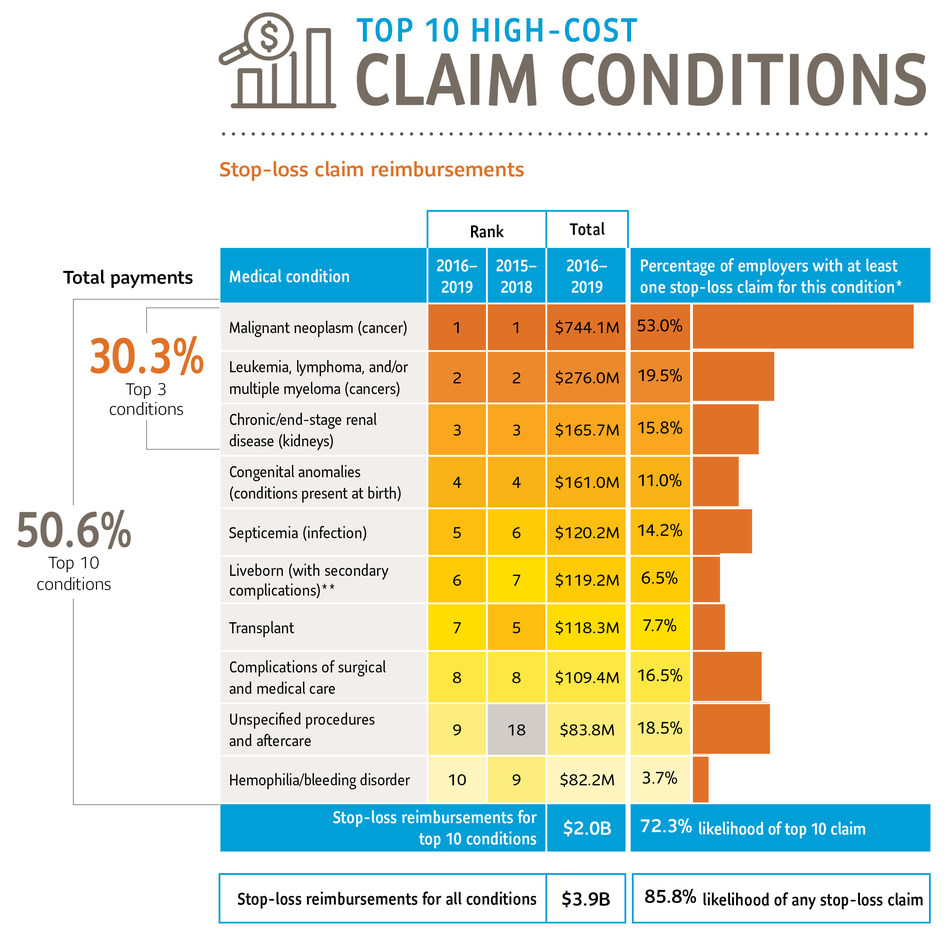
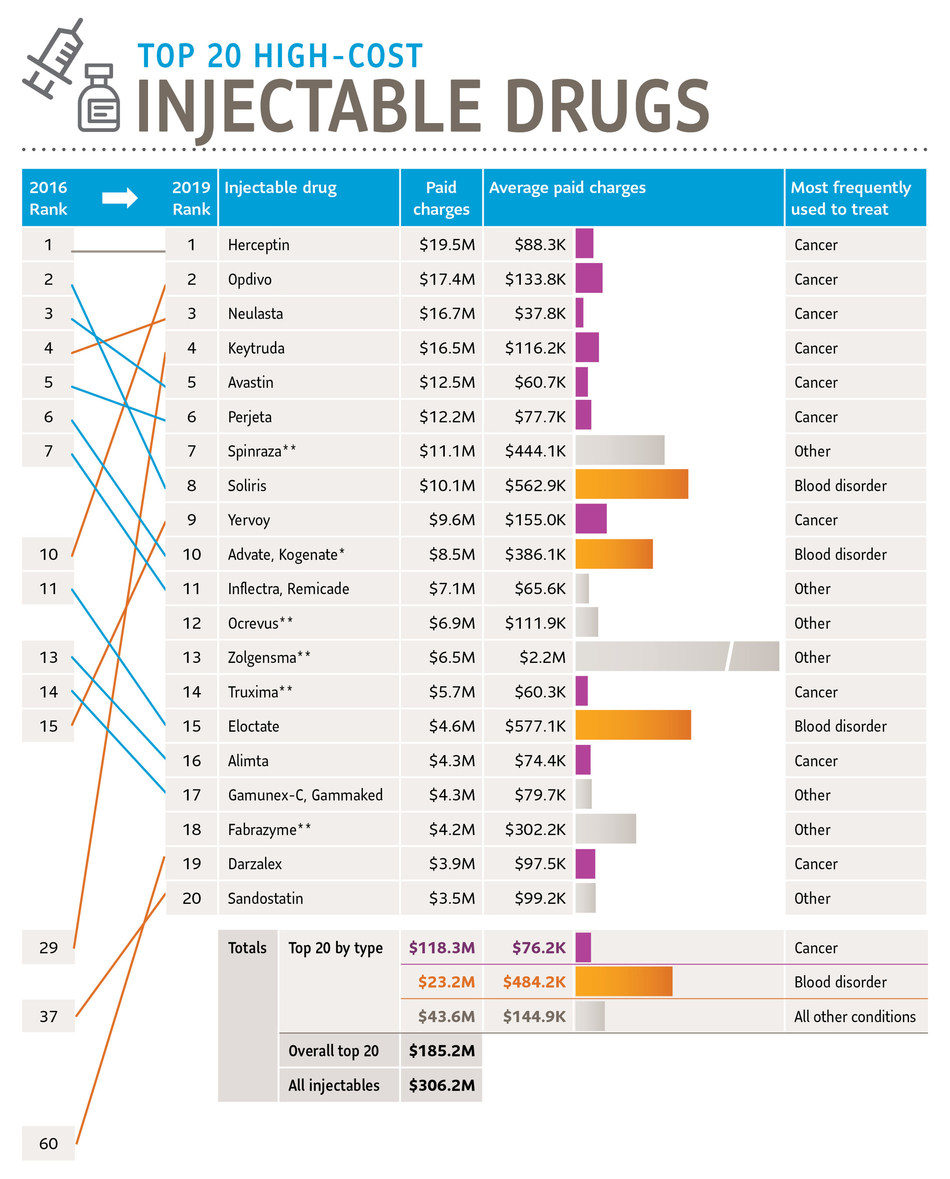
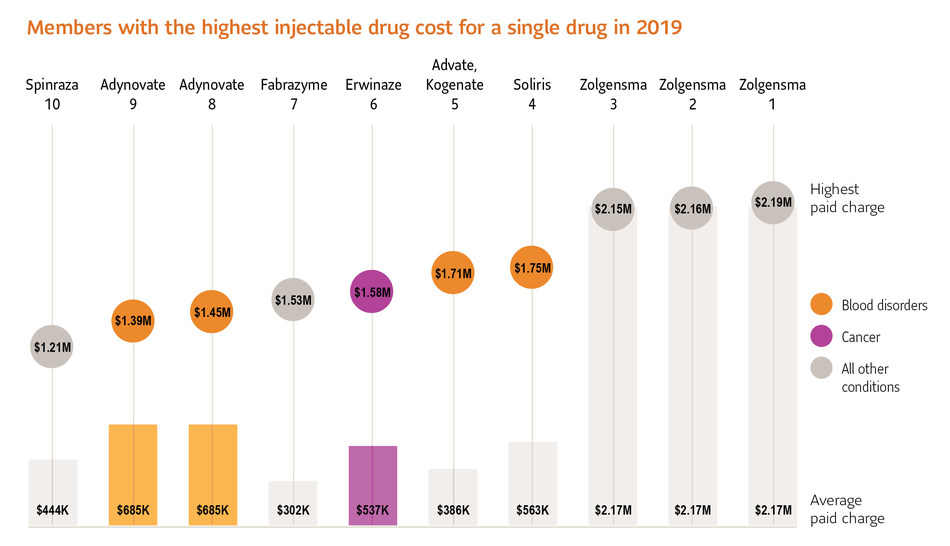
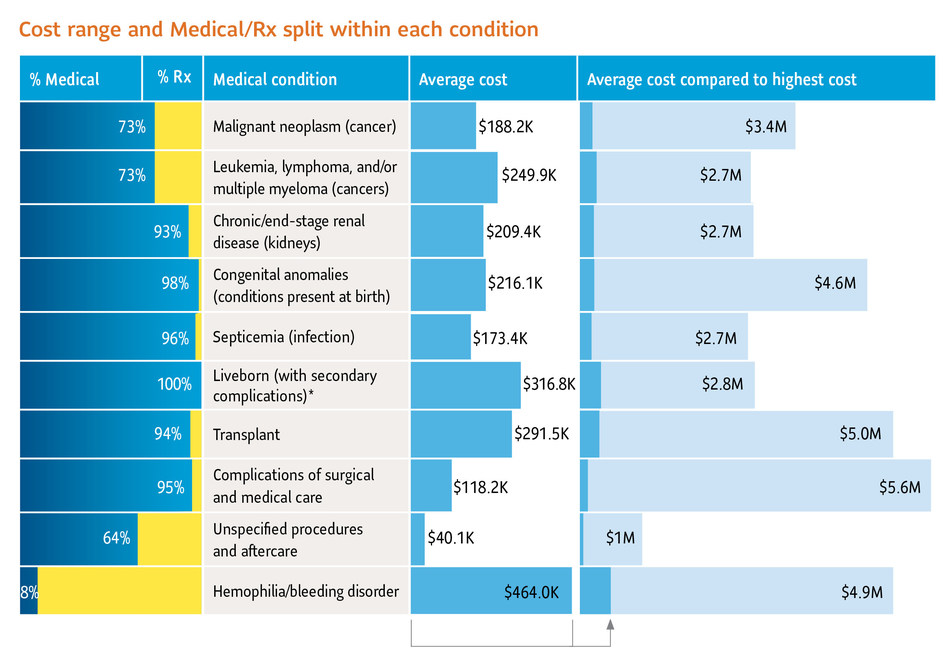
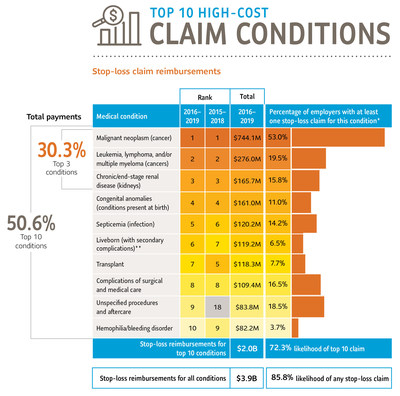
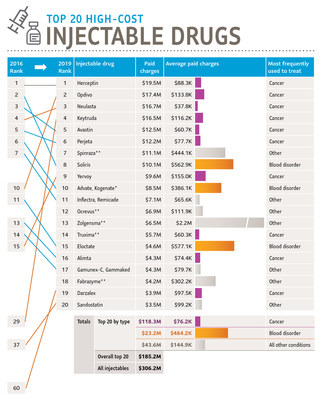
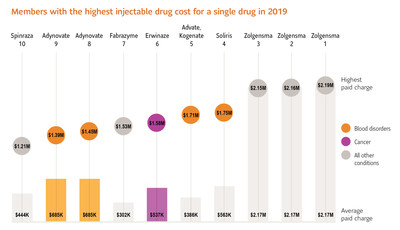
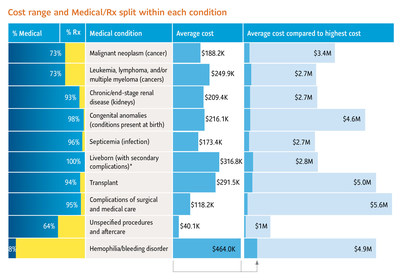
A Sun Life webinar on June 30 will offer expert insight and analysis of high-dollar claims.
“We fully support the expansion of life-saving drug treatment options that are becoming available to patients with cancer and other serious medical conditions – it’s also important to note that this trend of increasing costs will continue, and the trillions of dollars spent on healthcare are the responsibility of employees, their families and the businesses where they work,” said Jen Collier, R.N., senior vice president, Stop-Loss & Health at Sun Life U.S. “We are here to guide self-funded employers through the changing healthcare landscape so they can make informed, data-driven decisions in their plan design and contain rising costs while addressing their employees’ healthcare needs.”
According to Kaiser Health, about 61 percent of workers in America are in self-funded plans, which means their employers pay their medical claims. Self-funding provides employers with more flexibility in health plan design as well as cost containment options, but also means they take on a financial risk. Stop-loss insurance mitigates that risk by providing self-funded employers protection from high-dollar claims. Sun Life’s research shows that about 86 percent of employers who self-fund will see a stop-loss (high-dollar) claim in any given year, eight percent of whom will see a million-dollar+ claim. As one of the largest stop-loss providers in the country, Sun Life’s report analyzed over 40,000 stop-loss claims from approximately 2,600 employer clients in the U.S., covering more than 4.7 million lives.
Other key takeaways from the report include:
- Million-dollar claims continue to rise: From 2016-2019, the largest increases in multi-million dollar claims were in the $3 million+ category, which doubled from 7 to 14 claims; $2 million – $3 million claims increased 44%, from 16 to 23.
- Million-dollar conditions: Some of the highest claims in excess of $3 million were for conditions including congenital anomalies, various types of cancer, genetic disorders (such as spinal muscular atrophy) and transplants.
- Injectable drugs: Of the top 10 costliest conditions cancer, hemophilia, and aftercare (care received after a significant diagnosis, surgery or other complications) had a quarter or more of their total cost from drug spend; Hemophilia is the one condition that incurs almost all cost from specialty drugs (92% of total claim dollars).
- Single drug spend: Zolgensma, introduced in 2019 to treat spinal musclar atrophy, had the highest average cost of nearly $2.2 million per patient.
- Age factor: 46% of million-dollar claims were for patients under the age of 20, and 71% of the $3 million+ claims were for patients under 12 – the most common conditions were various forms of cancer and congenital anomalies.
- COVID-19: Although many COVID-19 claims do not breach the stop-loss deductible level, the stop-loss claims we have seen to date have had hospitalization stays between 3 and 35 days; the highest hospitalization cost for an individual patient exceeded $190,000.
“We are seeing a continuously active pipeline of new drugs, medical procedures and emerging treatments that improve and extend patients’ lives, which is very exciting,” said Dan Fishbein, M.D., president of Sun Life U.S. “As healthcare and insurance continues to change, we are remaining nimble and innovating to make sure members and their families get the care they need, and our employer clients can better manage their costs.”
“Employers should embrace a holistic approach to health in their plan design,” added Collier. “This will help address comorbid and underlying conditions such as mental health issues, which can drive up costs and more importantly, negatively impact the employee’s health.”
Sun Life uses clinical expertise to analyze stop-loss claims and identify opportunities for cost reduction, such as improper prescription amounts, billing errors, or changes in treatment settings that not only reduce cost but better accommodate the patient. Further analysis of the stop-loss research and current healthcare cost trends can be viewed in a recent webinar conducted by Sun Life. That and other webinars, including important information on COVID-19, can be found here. For the full report analysis, register for our next webinar on June 30.
About Sun Life
Sun Life is a leading international financial services organization providing insurance, wealth and asset management solutions to individual and corporate Clients. Sun Life has operations in a number of markets worldwide, including Canada, the United States, the United Kingdom, Ireland, Hong Kong, the Philippines, Japan, Indonesia, India, China, Australia, Singapore, Vietnam, Malaysia and Bermuda. As of March 31, 2020, Sun Life had total assets under management of C$1,023 billion. For more information, please visit www.sunlife.com.
Sun Life Financial Inc. trades on the Toronto (TSX), New York (NYSE) and Philippine (PSE) stock exchanges under the ticker symbol SLF.
In the United States, Sun Life is one of the largest group benefits providers, serving more than 60,000 employers in small, medium and large workplaces across the country. Sun Life’s broad portfolio of insurance products and services in the U.S. includes disability, absence management, life, dental, vision, voluntary and medical stop-loss. Sun Life and its affiliates in asset management businesses in the U.S. employ approximately 5,500 people. Group insurance policies are issued by Sun Life Assurance Company of Canada (Wellesley Hills, Mass.), except in New York, where policies are issued by Sun Life and Health Insurance Company (U.S.) (Lansing, Mich.). For more information, please visit www.sunlife.com/us.
Media contact:
Devon Fernald
Sun Life U.S.
781-800-3609
Devon.Portney.Fernald@sunlife.com
Source: PR NEWSWIRE
Support families fighting financial toxicity of cancer – here.
